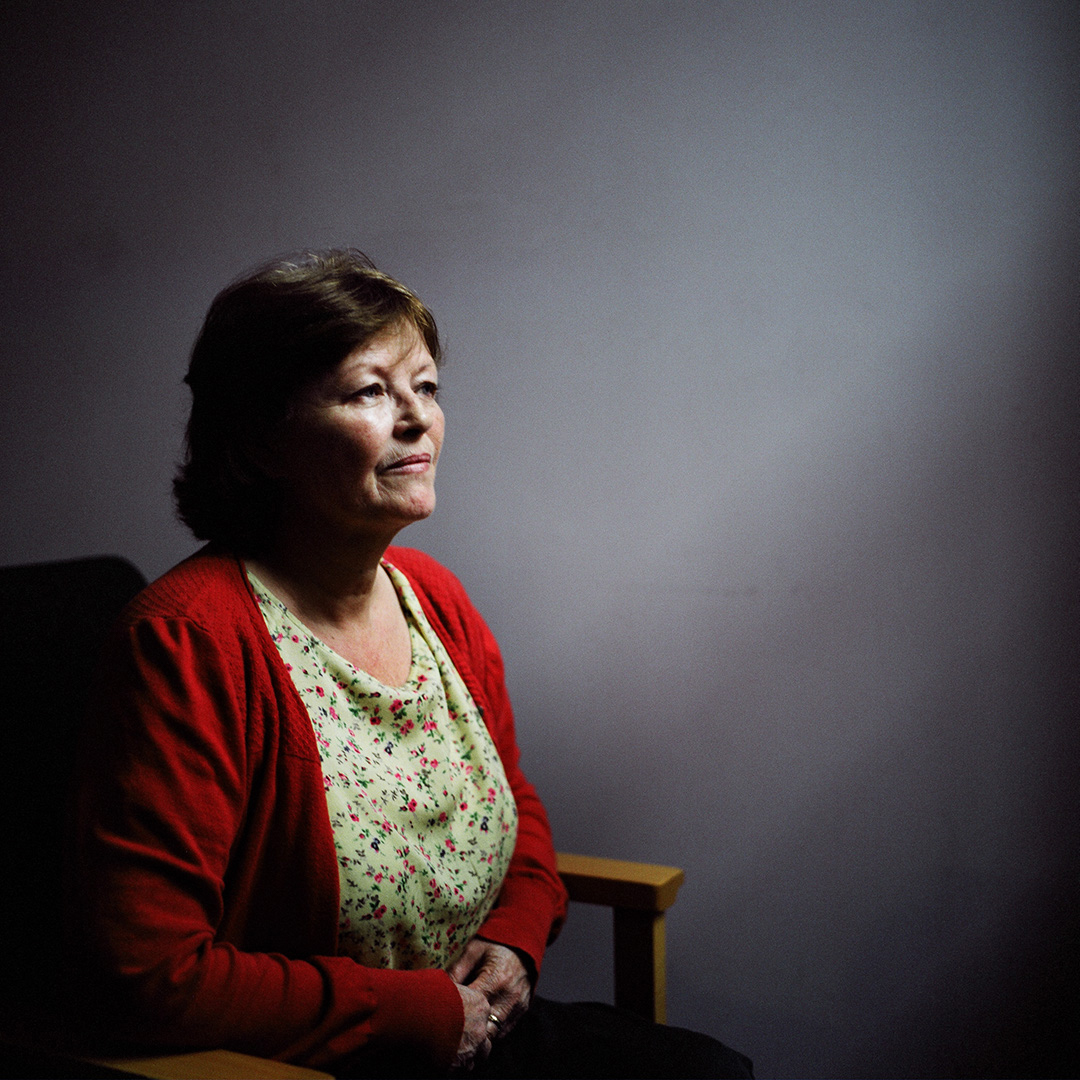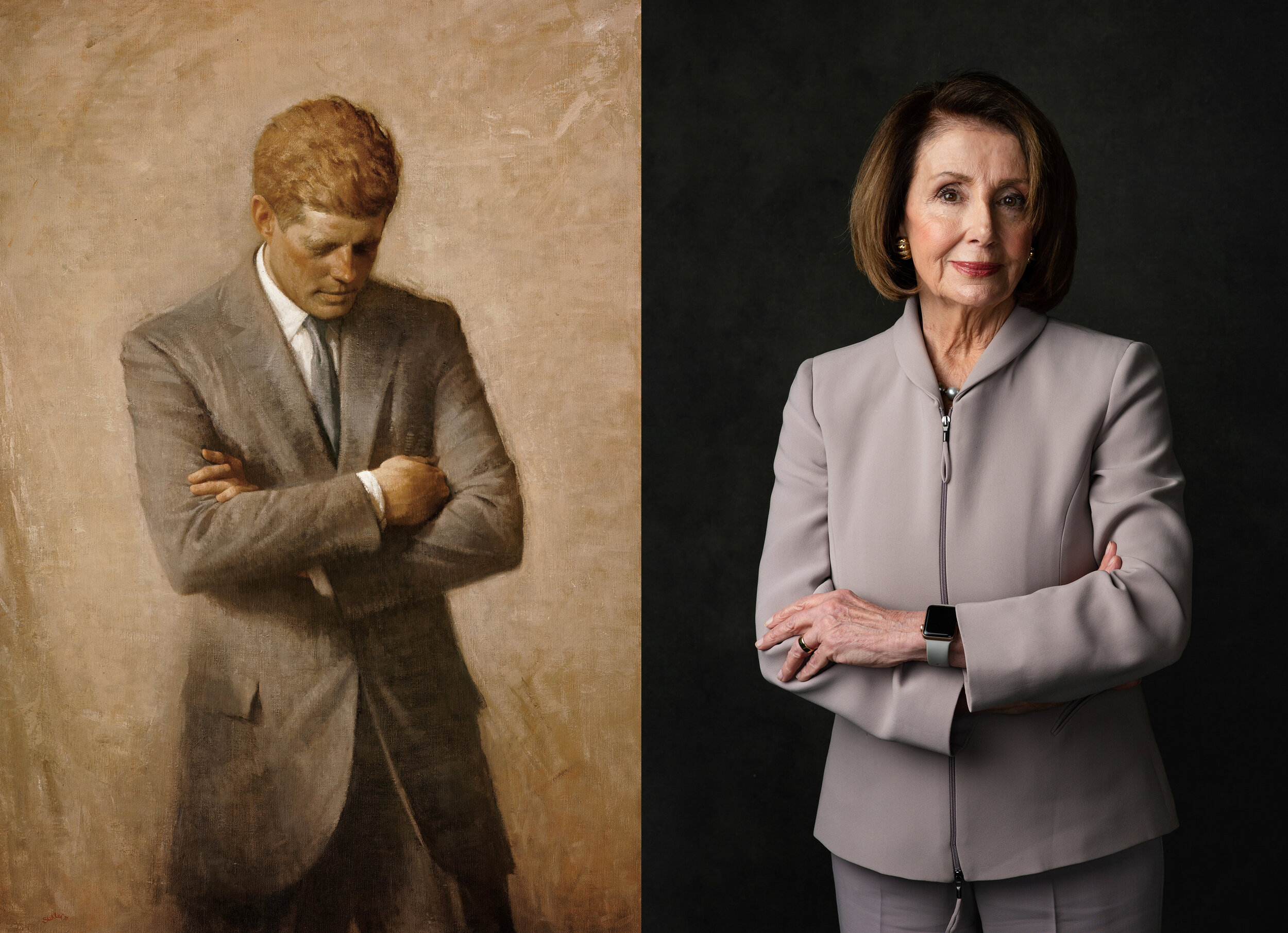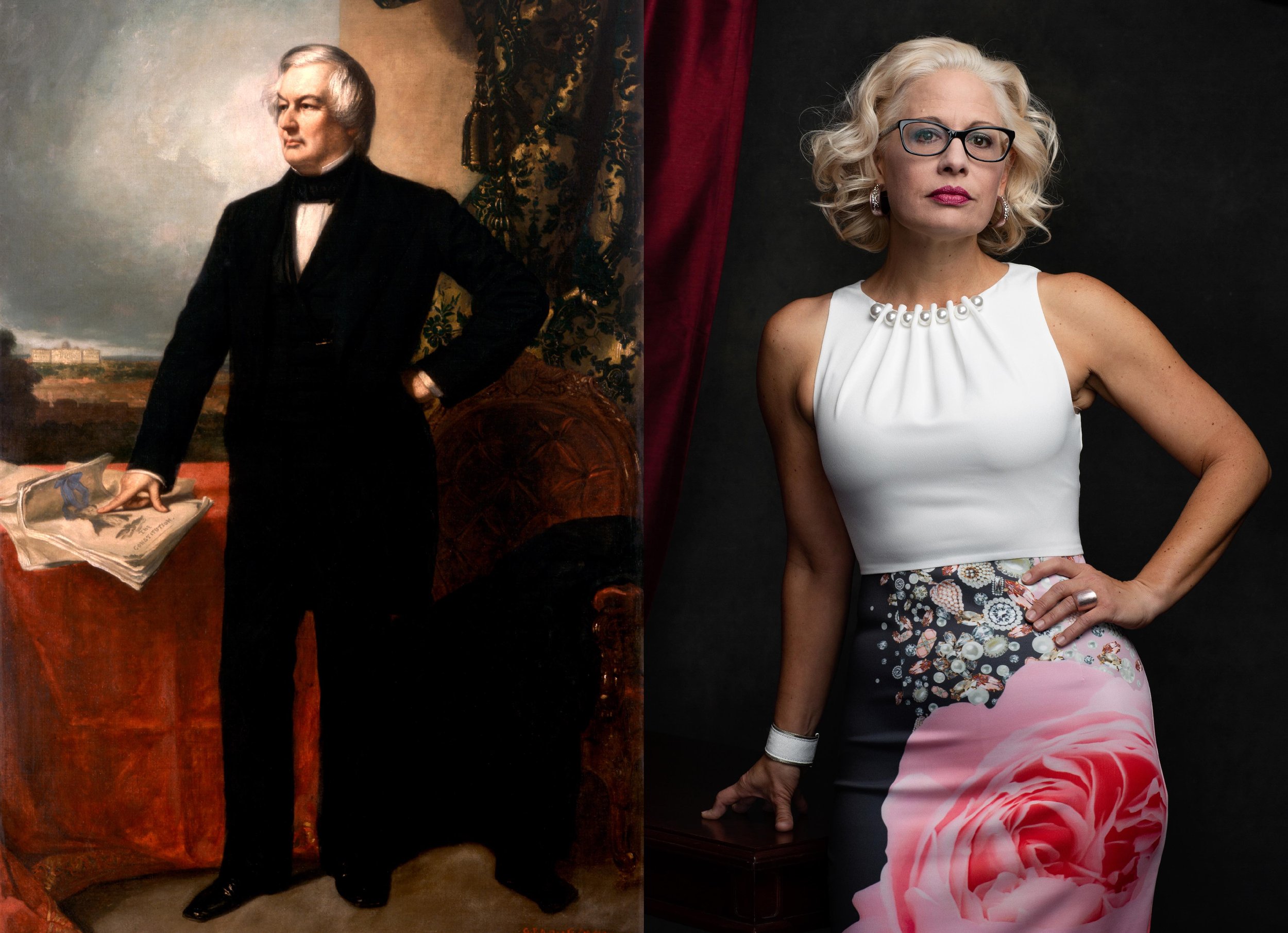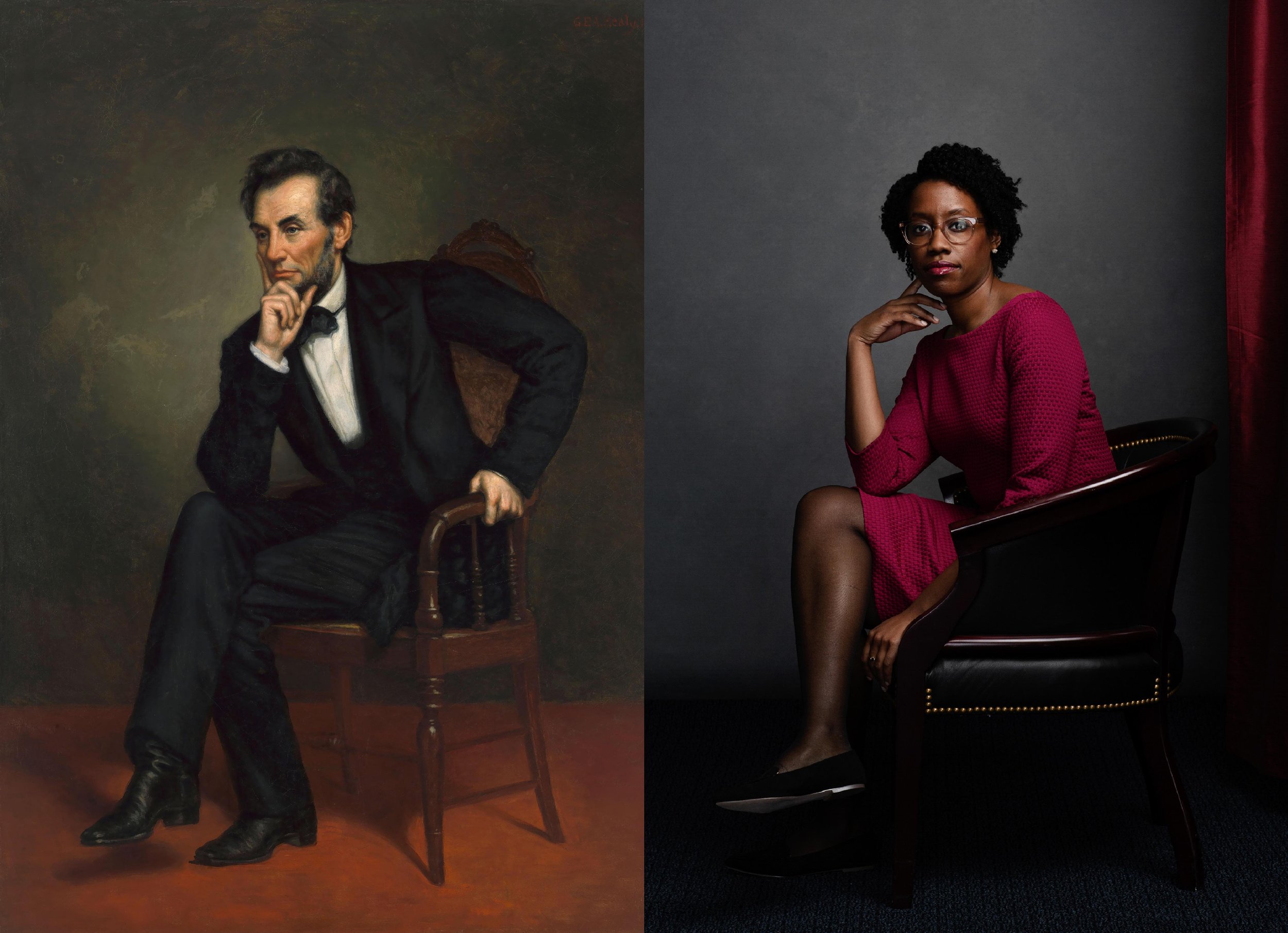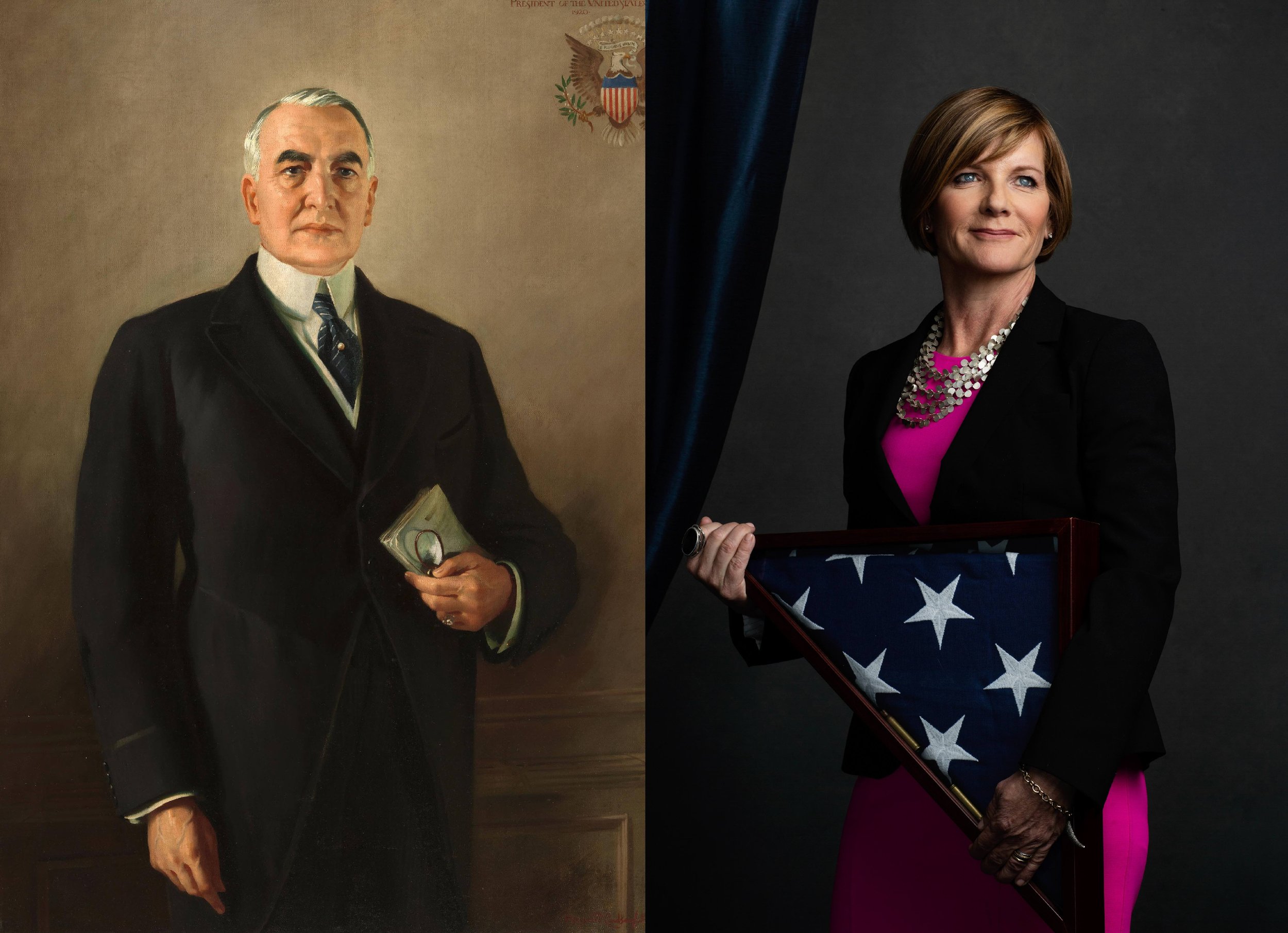This page showcases samples of my research, both for reporting and academic projects. Links provided throughout.
Politics & Identity
📚📋🖥️
Women in Congress
Conducted historical research, co-produced, co-photographed, and wrote for special section on Women of the 116th Congress for The New York Times.
Pitched, researched, and co-photographed The Women of the 116th Congress, which included portraits of 130 out of 131 women members of Congress, shot in the style of historical portrait paintings. The story ran as a special section featuring 27 different covers, each featuring a different local woman member of Congress that varied depending on where that version of the paper was printed and distributed, It was subsequently published as a book by Abrams Books with a foreword by Roxane Gay.
Researched focused on the history of women’s involvement in politics in the United States, focusing specifically on women’s membership in Congress, including biographies of historic women members of Congress. Elicited quotes from the offices of 130 of the women serving in the 116th Congress, and wrote introduction essay to special section and book.
I spoke with Beth Flynn about the making of the project on the Vision Slightly Blurred podcast and with Marisa Schwartz Taylor at Berkeley’s Institute for Governmental Studies webinar series, and about the visual approach and style at the Shaping an Image: Political Women in History and Today lecture, presented by The Getty Museum.
Below: Timeline major moments from women in American politics, created for the book.
Below: Tearsheets from the Women of the 116th Congress special section.
Collaborators: Marisa Schwartz Taylor, Beth Flynn, Celeste Sloman, Jane Mitchell, Rumsey Taylor, Josh Williams, Fred Bierman, Tom Jolly, Wayne Kamidoi, Andrew Sondern, Kelly Doe.
Survey of Congressional Staffers on Gender Dynamics at Work
Conducted online survey of congressional staffers to examine why women congressional staffers were more likely to advance to top positions in offices led by women compared to those led by men.
This work examines how gendered networks operate at a micro-level in the U.S. Congress. To conduct the survey-based research, we compiled a list of 10,000 current staff members using the standard House and Senate email structures and publicly-available staff directories. We distributed the survey to this full list, and were able to reach roughly 7,000 staffers, as indicated by the number of bounced emails and auto-replies received. Respondents were linked to their boss’s office to conduct the analysis.
With 228 responses, the survey more than doubled prior academic surveys of staffers run in the past. Results suggested that women staffers are less likely to have face time with male members of Congress. Among staffers who are working in offices led by men, women are significantly less likely to report directly working or traveling on a weekly basis with the member who employs them. With less contact, women may be in a less advantageous position to receive a promotion.
Collaborator: Neil O’Brian.
The Politics of History Textbooks
Conductive extensive archival research to examine how contemporary politics shape state-sanctioned narratives of the past, focusing specifically on official narratives in textbooks.
This area of research includes two projects, both of which involve extensive archival research and fieldwork. The first examines how the events of September 11th, 2001 are recounted in high school history textbooks worldwide. I created a dataset of digitized passages from over 850 textbooks from over 90 countries. This research informed reporting for a New York Times interactive story on how students are taught about 9/11 in 12 different countries.
The second project examines how narratives of the 1971 Liberation War in Bangladesh have been written and revised in the country’s social science textbooks from independence to the present. I created a dataset of digitized passages from over 150 Bangladeshi textbooks from 1971 to the present, conducted 100 semi-structured interviews with educators and political elites, and carried out 30 school visits with classroom observations across Bangladesh’s seven districts.
Below: Pages from digitized textbooks with narratives on 9/11. Click to enlarge; texts are from (in order from left to right, starting from top row) Australia, Botswana, Cambodia, Cameroon, Chile, China, Czech Republic, Germany, Hong Kong, Japan, Kazakhstan, Norway, Papau New Guinea, Slovenia, South Korea, South Africa, Sweden, Switzerland, Turkmenistan, Ukraine.
Trauma & Politics
📷 📝 🎥
Psychological Trauma and Community Stability
Designed and implemented multi-method dissertation research theorizing and testing how psychological trauma impacts social cohesion in the context of humanitarian crises.
My dissertation research, Individual Trauma, Collective Stability, theorizes and examines how the psychological implications of living through humanitarian crises affect social cohesion. I present the theory of psychological foundations of social cohesion, which posits that individuals' adverse responses to trauma exposure, manifest as psychological distress, lead to changes in social cohesion outcomes.
The primary test of the theory uses an original panel dataset gathered via a randomized controlled trial (RCT) evaluating the efficacy of The Field Guide for Barefoot Psychologists, a novel psychoeducational program designed to improve emotion regulation and reduce psychological distress among Syrian refugees living in Za'atari Refugee Camp in Jordan. The study, conducted in collaboration with Beyond Conflict, The New School, and The Ford Foundation, provides evidence for the theory that interventions designed to improve individual psychological well-being may have secondary improvements on community-relevant factors via the theorized relationship between psychological distress and social cohesion.
This work received the 2023 Best Dissertation Award from the American Political Science Association, Political Psychology Section. Full dissertation available here, and a working paper featuring the main empirical test of the theory is available here. I’ve also spoken about the research on the Talking Policy Podcast and with the Educators for Human Rights Institute.
Collaborators: Vivian Khedari, Michael Niconchuk, Sarah Beranbaum, Biz Herman, Zakarya Alkareem, Basma Jaber, and Wendy D’Andrea.
Women in Conflict
Conducted multi-year multi
This project draws on a dataset of 120 semi-structured interviews that I have completed with women who have engaged in various roles in modern conflicts across the globe. Conflict narratives of women — a population who are often excluded from official remembrances — allow for a test of how individual attitudes toward collective stability are affected when a person’s experience is excluded form official remembrances. This work will result in a solo authored paper and the release of the deidentified dataset of the interviews.
The project has expanded to examine the history of women in conflict, examining both how written have been featured in historical accounts of war, and in identifying women who have been omitted from narratives in the past.
Below: Newspaper clippings from archival research, picturing Alice S. Burke and Nell Richardson.
Below: Images and video clips from the project. Hover over images for caption information, including excerpts from interviews.
Collaborators: Rebecca Rose, Simul Khan, Velma Saric, Kristen Deasy, Deena Adel, Sara Elkamel.
The Women of the 116th Congress
Pitched project to The New York Times to document the women of the 116th Congress, co-photographed with Celeste Sloman. Ran as a special section in January 2019, later published as a book.
I pitched, researched, co-produced, and co-photographed The Women of the 116th Congress, which included portraits of 130 out of 131 women members of Congress, shot in the style of historical portrait paintings. Like the work of Kehinde Wiley, who painted Barack Obama’s official presidential portrait, the photos sought to evoke the imagery seen in the halls of power, but place people not previously seen as powerful in the frame.
Production involved working with editors Marisa Schwartz Taylor and Beth Flynn to contact and schedule all 131 women members of Congress in a studio setup on Capitol Hill. The story ran as a special section featuring 27 different covers, and was published as a book by Abrams Books with a foreword by Roxane Gay.
Below: Video presentation of the images from the project, with quotes interspersed.
Below: The 27 covers that ran with the special section, with members local to the printing region featured on each. Use arrows to advance to see tearsheets of the special section.
Below: Diptychs pairing current members of Congress with presidential portraits. Use arrows to advance.
A Woman’s War
Multimedia and oral history project documenting the role of women in modern conflicts in Bangladesh, Bosnia and Herzegovina, Egypt, Northern Ireland, Vietnam, and the United States.
Made portraits, conducted interviews, and filmed video to document stories over 120 women involved in modern conflicts. Testimonies and additional portraits available here.
Above: Võ Thi Yên (top left) in Hue, Vietnam in July 2010, served as a member of the North Vietnamese Army. Kakon Bibi (top middle), in Dhaka, Bangladesh in September 2011, served as a freedom fighter in the 1971 Bangladesh Liberation War. A young girl (top right), who wished to remain anonymous in Cairo, Egypt in May 2012, was raped while participating in political protests in Tahrir Square during the Arab Spring. Dževada Trešnjo (bottom left) in Ilidža, Bosnia and Herzegovia in July 2012, served in the Bosnian Army Medical Corps and lost her hand while trying to protect a young boy who had been wounded. Begum Gulferdous (bottom middle) with her granddaughter in Comilla, Bangladesh in August 2011, served as a spy and weapons smuggler in the 1971. Katerina Kaltak (bottom right), in Ilidža, Bosnia and Herzegovina in August 2012, joined the Bosnian Army Medical Corps at age 16 with her older sister, Kristina Mujak, after their younger sister, who was eleven at the time, was killed by artillery fire.
Below: An edit of video testimonials from the project.
Block Parties in New York City
Was one of 20 visual journalists taking photos and video for a special section highlighting block parties across New York City. Project was nominated for a News and Documentary Emmy.
Below: Lead photo for the project, which I photographed at a block party in Sugar Hill. See full story here.
Ethics in Research
📝👤 📒
Ethical Considerations for RCTs in the Global South
A co-authored article published in PS: Political Science & Politics, highlighting considerations for research involving field experiments in the Global South.
In “Field Experiments in the Global South: Assessing Risks, Localizing Benefits, and Addressing Positionality,” co-authors and I draw on our research experiences to offer best practices to better localize benefits and assess risks in such studies. By dividing the research process into four stages—idea generation, planning, implementation, and scientific communication—we offer a series of practical considerations and tools that will allow researchers better consider the risks and benefits posed to research participants, the community in which the study is taking place, and the research team, as related to field experiments in the Global South.
Collaborators: Amma Panin, Elizabeth Iams Wellman, Graeme Blair, Lindsey D. Pruett, Ken Ochieng’ Opalo, Hannah M. Alarian, Allison N. Grossman, Yvonne Tan, Alex P. Dyzenhaus, Nicholas Owsley
An additional line of research focuses on improving best practices for applied and ethical microlevel research with populations with lived experiences of violence and trauma. This research builds on work that I have been undertaking with co-authors to develop guidelines regarding processes and ethical considerations for designing and fielding research in fragile security contexts.
Human Trafficking
Designing & Evaluating Anti-Trafficking Education Campaigns
Served as Research Manager for the Human Trafficking Vulnerability Lab and worked with the International Organization on Migration to design and implement research on human trafficking.
The four multi-year studies included designing and evaluating the efficacy of anti-trafficking education campaigns (separate studies conducted in Hong Kong, Nepal, and the U.S) and designing and implementing a nationally-representative survey assessing the prevalence of child trafficking in Jamaica.
The lab applies experimental methods to study the impact of awareness campaigns on norms and behaviors that leave people vulnerable to labor exploitation and human trafficking. Thus far, data have been collected in Nepal and Hong Kong, with a specific focus on populations that are either vulnerable to trafficking and labor exploitation or responsible for mitigating it. This includes the general public, law enforcement, employers, and migrant domestic workers. With funding from Humanity United, USAID, US Department of Labor, Stanford University, Terres des Hommes, and Vanderbilt University, the HTV Lab has tested the efficacy of these campaigns on the knowledge, attitudes, beliefs, and practices of populations that are either vulnerable to trafficking and labor exploitation or responsible for mitigating it. This includes the general public, law enforcement agents, employers, and migrant domestic workers (MDWs).
Studies included collaborating with field partners and conducting interviews and focus groups to solicit input for both education campaigns and survey instruments evaluating their efficacy, conducting statistical analyses of randomized controlled trials evaluating the campaigns’ efficacy, creating data visualizations, authoring academic articles, and writing reports for public audiences to communicate findings.
Collaborators: Margaret Boittin, Cecilia Hyunjung Mo, Dennis Feehan, Guy Grossman, Sarah Rich-Zendel, and Soo Sun Yoo. Learn more at www.htv-lab.com.

























































